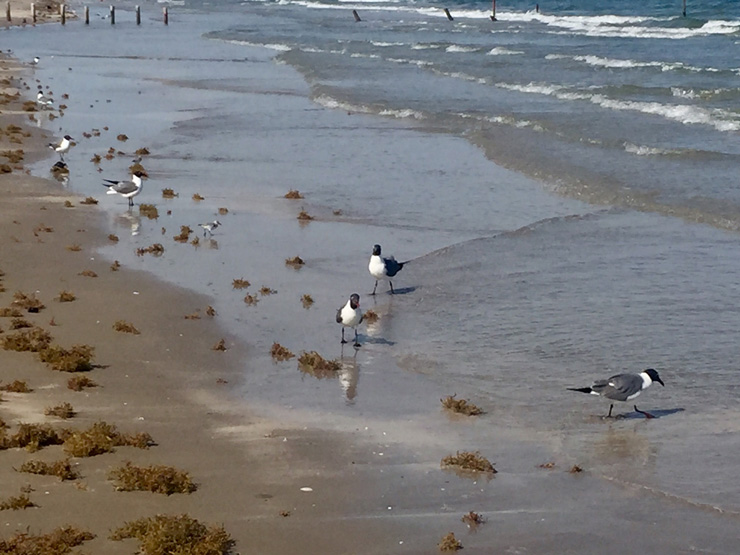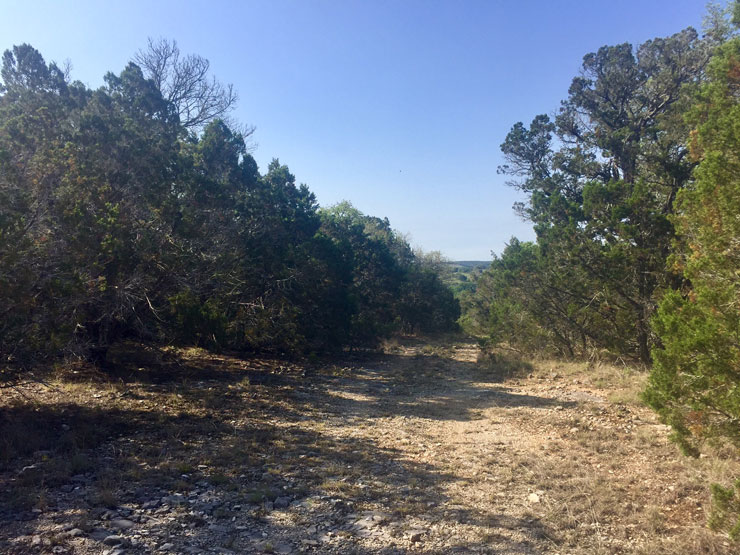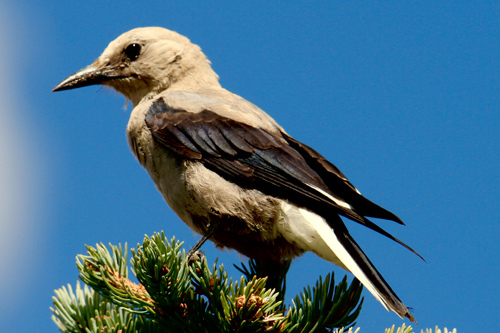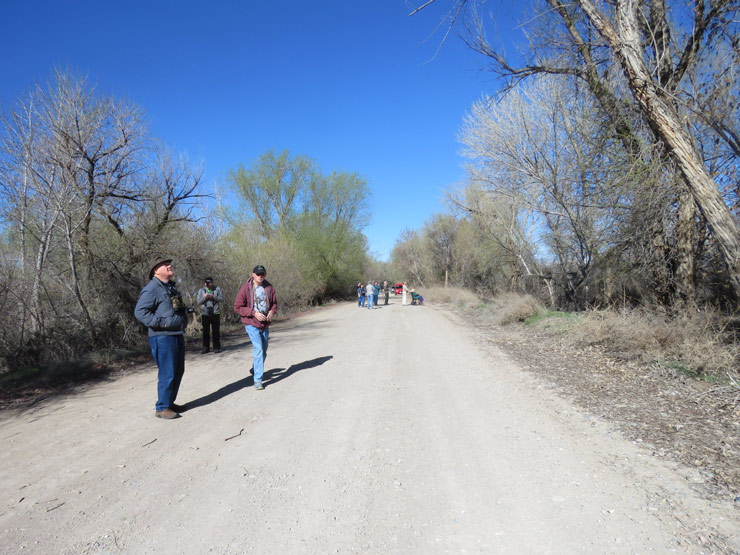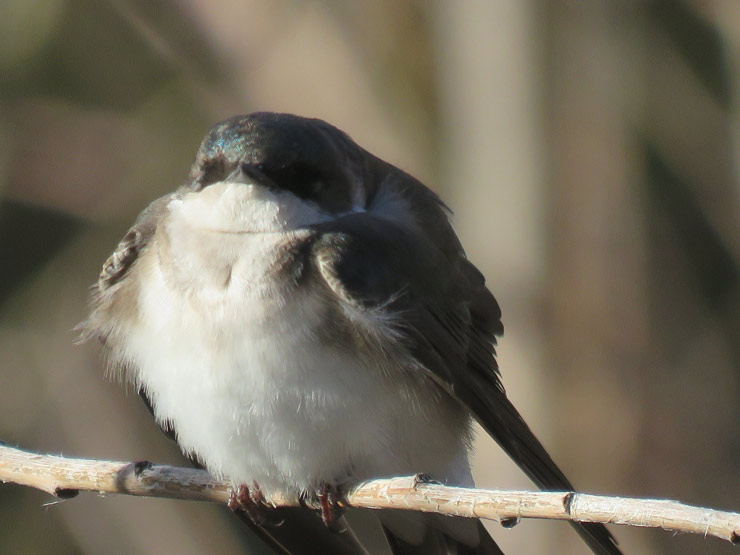Utah County Birders
Newsletter
|
|||||||||||||||||||||||||||||||||||||||||||||||||
 |
Contents
May Meeting
Upcoming Field Trips
Captain's Log
Bird of the Month
Field Trip Reports
Thursday, May 10, 2018, 7pm at the Monte L. Bean Museum in Provo, UT.
Birding in
Australia, New Zealand, and French Polynesia presented by Jesse
Lee
Saturday, May 5 - 8:00 am
SPANISH FORK TRAIL / PAYSON HOLLOW
Meet at the Canyon View Park (near the mouth of Spanish Fork Canyon - 3300 E.
Powerhouse road - west of Spanish Oaks Golf Course) in the west end of the
parking lot near pavilion 3. We'll walk part of the tail and then go to
Payson Hollow. (Lead by Lyle Bingham)
Monday May 14 - 7am to 3pm
UTAH COUNTY HOTSPOTS
Meet at the Payson Wal-Mart parking lot in the northeast corner.
Come a little early so we can leave at 7am sharp. We will go to Warm Springs WMA,
Goshen, Goshen Canyon and Eureka!! A fun trip with hopes of a 100 species for
the day! (Lead by Suzi Holt)
Friday and Saturday - first week of June
WASHINGTON COUNTY
Dennis Shirley is projected to lead a field trip to Washington County the first weekend of June. Might be good to check on lodging if you'd like to go ... details to come later.
We are actively recruiting people to lead local half-day field
trips, any time, any place. If you would like to lead a field trip or if you
have any ideas for this year’s field trips, please contact Suzi Holt at -
suzerqholt@gmail.com
Utah County Birders
Captain’s Log: May
2018
by Keeli Marvel
Hola Birders! This one's going to be a long one, so sit
back, relax, and enjoy the ride. I am currently drafting this while on my flight
back from San Antonio, TX where I just spent a week attending Natural Resources
and Endangered Species Training at the Army Environmental Command at Fort Sam
Houston. First, important business up front, I got four lifers on this trip!
I'll tell you which ones shortly. I had a laundry list of birds to see, and as
is pretty standard I dipped on quite a few of them. I did, however get the
really important ones, and I saw a bunch of the other cool TX birds in the
process.
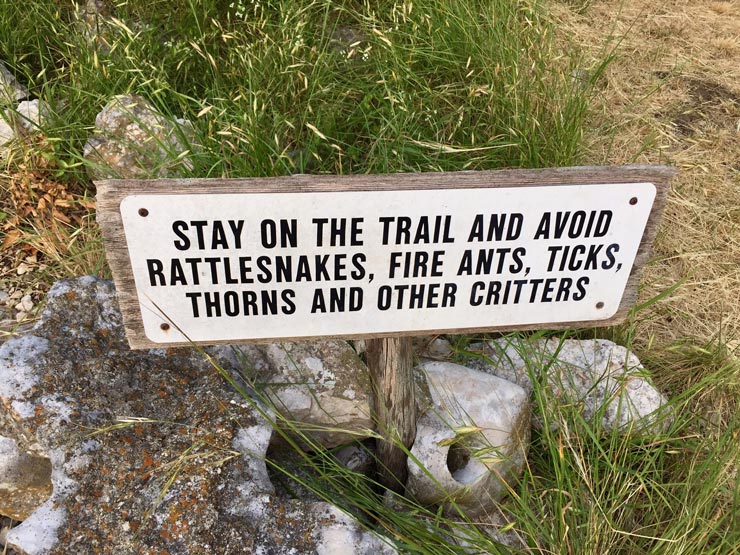 |
|
On a trail near Bracken Cave |
| I flew in on Sunday morning
and headed directly out to Government Canyon State Natural Area in the
afternoon for a hike with my program manager. We wandered around the Front
Country trails until almost dusk. While there we picked up some fun birds
including Painted Bunting, White-eyed Vireo, Vermillion Flycatcher,
Golden-fronted Woodpecker, Scissor-tailed Flycatcher, Northern Cardinal,
Crested Caracara, and Black-crested Titmouse. Great-tailed Grackles
and White-winged Doves are literally everywhere in that part of TX
and if you bird for any length of time there they soon turn into window
birds (ones you start ignoring and looking through to see the other birds). We were in training all day during the week, but on our lunch breaks in the courtyard of our building at Fort Sam, I sat and watched Purple Martins, Chimney Swifts, and several swallow species zipping around, and it seemed like there was always a Great Egret or Cattle Egrets flying over. Where to and from I would be curious to find out. After our training ended on Friday I dragged my program manager and a new friend/colleague from the training out to Corpus Christi. Our first stop was the Rose Hill Memorial Park (cemetery) where a sort of mini warbler migration fallout was in progress. In about half an hour of warm mid-afternoon sleepy time birding I saw Blackburnian, Black-and-White, Bay-breasted, Chestnut-sided, Hooded, Kentucky, and Magnolia Warblers, Northern Waterthrush, Wood Thrush, Acadian Flycatcher (lifer #1), Baltimore And Orchard Orioles and a few other species. Shout out to the awesome San Antonio Audubon birder who was there and keyed me in on the warbler flock! Wish I'd remembered his name... |
|
|
|
|
Mustang Is. State Park:
Laughing Gulls, Ruddy Turnstone, Sanderlings |
|
| From there we went
out to Mustang Island State Park and a walk down the beach produced
Laughing Gulls, Sandwich, Common, Caspian, Royal, and Least Terns, Ruddy
Turnstone, and Black Skimmers. I was really hoping for some
Gull-billed Terns, but it wasn't in the cards no matter how hard I stared at
the Sandwich Terns with my binos (they've got cool white tips on their
beaks, did you know that?) |
|
| Driving back into Corpus Christi we also picked up Reddish Egrets and Tri-colored Herons and a magnificently pink Roseate Spoonbill foraging in the shallow marshes along the Intracoastal Waterway. | 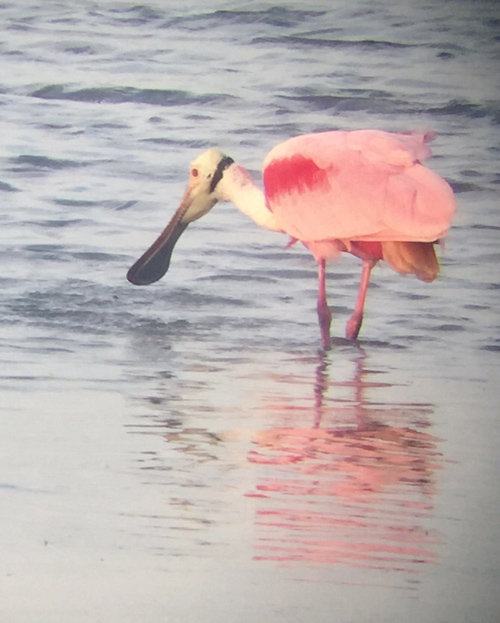 |
|
Roseate Spoonbill |
|
|
|
|
|
Golden-cheeked Warbler
habitat, Kerr WMA |
|
My last morning in TX I wandered further afield once again into the beautiful TX
Hill Country to Kerr Wildlife Management Area in search of the holy grail of
birds: Golden-cheeked Warblers (GCWA). They are listed as an Endangered
Species for the main reason that the entire breeding habitat of their entire
species is located inside a couple hundred mile chunk of the Edwards Plateau in
TX hill country. As is the case for many endangered species, over the years
development, grazing, and other land uses has fragmented a large portion of
their habitat. One of the cool things I learned about in training this week is
that some of the GCWA range falls within a few of the military installations in
the area between San Antonio and Austin and the military works hard to protect
that habitat but also to ensure that that protection doesn't impacts their
ability to continue implementation of the military missions of those
installations. There's a really cool program where the military offsets impacts
on installations by investing through partnerships and land trusts in tracts of
land off post that are conserved to protect some of the most critical breeding
habitat in perpetuity. I believe Government Canyon is one of those areas that
the military was instrumental in helping set aside for preservation.
I checked in at the main entrance to Kerr WMA, picked up a birding map, and
headed about back out and 3/4 mi down to a gate in their Spring Trap area where
you park and walk in through a high fence gate. Now, I'd already realized
something this trip. I don't recognize the vast majority of birding calls in TX,
so I'm not gonna lie, it was HARD. I'd studied up on the GCWA call so I could
recognize it and I heard one call off in the distance a couple times but
struggled to locate it. Lucky for me I ran into some other friendly birders who
also started helping me pick out a few of the other calls, and after a few
minutes of walking up the Spring Trap dirt road, one GCWA flew over! Lifer #2! I
also picked up some other cool birds there - Hutton's Vireo (lifer #3),
Clay-colored, Rufous-crowned, and Field Sparrows, larger
than life Blue-gray Gnatcatchers (it's true everything's bigger in TX),
and Red-Shouldered Hawk. Also, I should probably mention the piles of
Vultures, both Black and Turkey that inhabitant the hill country. They are
EVERYWHERE, soaring overhead or perched on big utility towers and power poles.
Alright, so last but not least, I drove back up to the main entrance to Kerr WMA
and drove up the main road about 3/4 of a mile where I picked up lifer #4,
Black-capped Vireo, an Endangered Species success story! Once I started
learning their call it seemed like I could hear them everywhere. As of last week
it had been determined that their population has been recovered to a point where
they no longer required as rigorous protection and they were delisted/down
listed. So that's exciting news! They've got a very energetic buzzy vireo type
call that reminds me of Lark Sparrow or a Bewick's Wren. On my way out at the
entrance kiosk I also picked up Bell's Vireo, Eastern Phoebe,
Vermillion Flycatcher, and Chimney Swifts.
Whew! You made it! Thanks for sticking with me on my journey. Hurray for spring
migration! More species returned to Utah this week, so get out and see them! I'm
headed south to Cedar City for a week of breeding bird survey training so I'll
report back next month on how that goes.
Adios and Happy Birding!
Keeli Marvel
by Jim Strong
|
Having grown up in the Black Hills of South Dakota this interesting bird in also known as a “Camp Robber” by local folks and tourists that enjoy mountain camping. Actually he is fun to watch as some folks are frightened by any bird that approaches their space. Sometimes they will help clean up your picnic table even when you do not want any help! They are frequently seen in the camp grounds of the High Uintas of Utah. If you have been birding in that area in late summer you have seen the Clark’s Nutcracker. Just try to get a photo of one as he moves quickly around looking for bird goodies at your camp site.
The Clark’s Nutcracker was
named after Captain William Clark of the Lewis and Clark Expedition back
in the early 1800s. The Clark’s Nutcracker is a jay sized bird but the
shape of a crow (but smaller) with a short tail, long wings and a rounded,
crestless head. The bill is long, straight, and sharp, perfect for
opening pine cones. They are pale gray overall with black wings and white
undertail coverts. The secondaries have white trailing edges, They have
dark eyes, black legs, feet and bill. |
Click here for past 'Birds of the Month'.
|
Field Trip Reports |
|
|
River Lane / Sandy Beach - 14 April 2018 by Suzi Holt |
|
| We had fourteen birders today on our River Lane/Sandy Beach + Benjamin Slough and Lincoln Beach Field trip!!!! | |
|
|
|
|
On our way just before Swede Lane we saw Bank, Cliff, Tree and Rough-winged Swallows plus a few Brewer's Blackbirds. We then began our official trip down River Lane. We saw another group of swallows with Rough-winged, Tree and 2 Violet-green Swallows. |
|
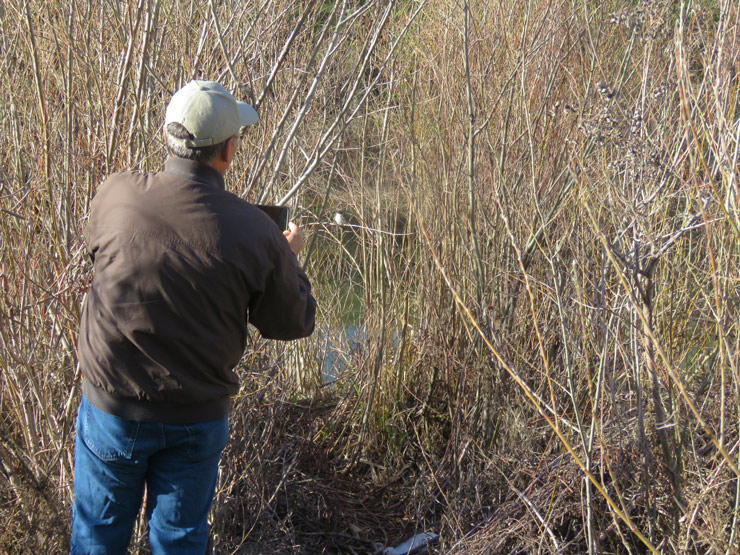 |
Down the road we came upon a huge flock of Vesper Sparrows eating along the roadside. Saw some Barn Swallows and Brown-headed Cowbirds-of course by the cows! Lyle had a close encounter with a Tree Swallow. |
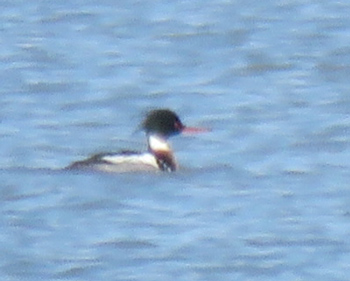 |
We then drove down to Sandy Beach. At the mouth of the river we saw a RED-BREASTED MERGANSER, American Coot, Spotted Towhees, White-crowned, Song and Lincoln's Sparrows, Yellow-headed Blackbirds. |
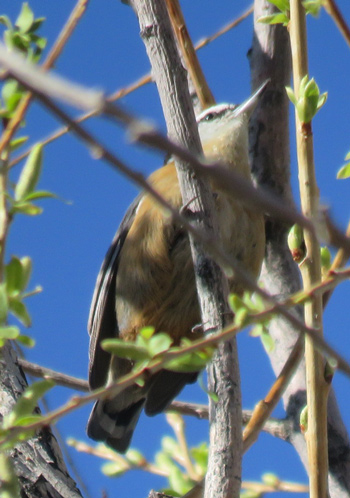 |
We drove back up River Lane in search of the Golden-crowned sparrow...We saw tons of Robins, Yellow-rumped Warblers, Orange-crowned Warbler, Black-capped Chickadees, a Red-breasted Nuthatch [left], Dark-eyed Juncos, a Flicker and Downy Woodpeckers. We finally found a flock of White-crowned sparrows so we started searching for the Golden-crowned sparrow. Steve spotted it and got a good look, Yvonne and I got a brief flyaway look. No photos :-(. |
| We then watched a Merlin
snatch a Tree Swallow midair and eat it on a branch! |
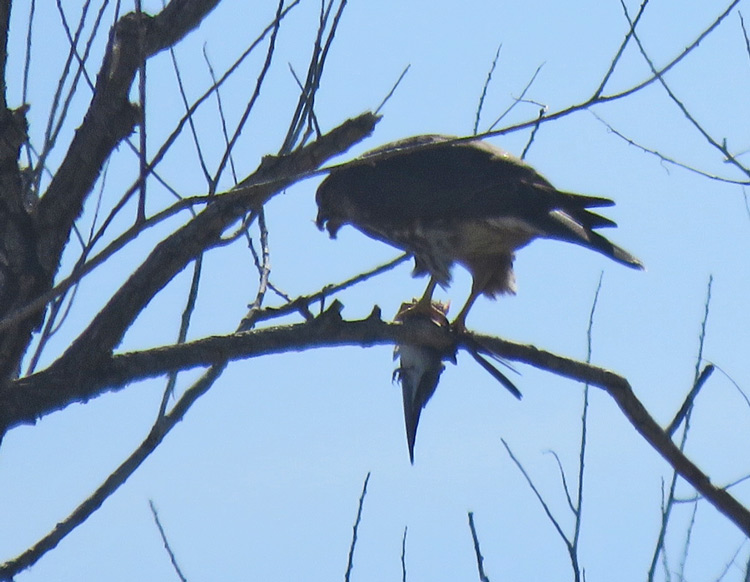 |
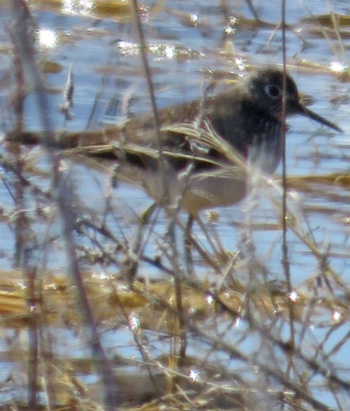 |
We decided from there to go to
Lincoln Beach with a stop by Benjamin Slough. Some needed a Black-necked
Stilt and I saw one so we turned around. I thought I saw a Spotted
Sandpiper. But it wasn't bobbing its tail enough, upon closer inspection we
had a Solitary Sandpiper!!! There were lots of ducks, geese and pelicans and a bunch of Eared Grebes. At Lincoln Beach we saw more Sandhill Cranes, American Avocets, more Coots than we wanted to count, 9 Ospreys on the 5 towers across the bay, a few Willets, lots more Yellow-headed Blackbirds and another Say's Phoebe. On the way back we saw a Raven and Turkey Vultures! A great day with 67 SPECIES!!!! |
| Solitary Sandpiper | |
